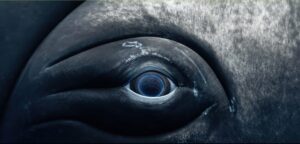At school, wildlife is pretty straightforward. Kids are told about lions, tigers, and bears (oh my!). But sometimes, the animal kingdom springs a surprise creature on us. Hybrids are unexpected mishmashes of two species. From the majestic liger, born of a lion and tiger union, to the enigmatic wholphin, a product of a dolphin and false killer whale pairing, these creatures challenge our understanding of nature.
Buffalypso
This odd and relatively unknown hybrid species originated in Trinidad and Tobago. It is a crossbreed between a species of swamp buffalo called a carabao and an Indian water buffalo. Locals created the buffalypso out of necessity. Buffalos, imported from India after the Second World War, were highly susceptible to local diseases, particularly tuberculosis, but also hoof and mouth disease and parasite-based illnesses.
After receiving expertise from abroad, veterinary scientist Stephen Bennet returned to Trinidad to develop a solution. He wanted to create an animal hardy enough to withstand the toughest climates and environmental stresses.
“The adaptability of these animals to tropical conditions would indicate that, with selective breeding and improved environmental conditions, these animals may easily find their way in the tropics,” Bennet said.
He tested his hybrid with herds belonging to the Caroni Limited Sugar Company. Bennett and his researchers eventually found success. The world’s first buffalypsos were physically tougher than your average water buffalo, had much more meat, produced high-quality milk, and were exported to several countries like the U.S., Italy, and Argentina.

A male buffalypso. Photo: Sugar Cane Feeds Centre
However, the buffalypso experiment ended after a few decades. A lack of funding, proper management, research, food supplies, and vaccination protocols led to a sad decline in the animals. Though they were initially disease-resistant, they started to develop brucellosis, which caused a steady decrease in numbers. What was once a healthy herd of a few thousand is now around 1,000. They have also become a nuisance to rural populations; they run around unsupervised, trampling crops and scaring locals.
Wholphin
First identified by the scientific community in Tokyo’s SeaWorld in the 1980s, the wholphin was the unexpected result of a union between a male “false killer whale” and a female bottlenose dolphin.
Smithsonian Magazine writer Carlyn Kranking believes that dolphins are more flexible in terms of who (and what species) they breed with than most species. This means there may be more dolphin hybrids in the wild.
The name is a little deceptive. A false killer whale is a type of dolphin, so technically, it is a dolphin hybrid. Researcher John Blanchard at Tokyo SeaWorld described the wholphin as: “darker than the other dolphins, and her nose looked like it was chopped off.”
Wholphins typically resemble a dolphin with a thicker, stocky frame and interesting color patterns. They generally fall between the size of a bottlenose dolphin and a false killer whale. They are playful, social, and intelligent.

A wholphin and bottlenose dolphin. Photo: Shutterstock
The wholphin in Tokyo SeaWorld died within 200 days. In Hawaii, a female wholphin survived to adulthood and gave birth to a few calves. All the calves died after a few months, except one, which had trouble nursing. The high mortality rate of the wholphin has prevented further studies.
Liger
The liger is the offspring of a male lion and a female tiger, while a tigon is a cross between a lioness and a male tiger. Ligers are larger and possess a lion’s muscular stature and a tiger’s large size. They can grow past 3.3 meters long and weigh up to 450kg, while tigons usually grow up to two meters long and weigh 320 to 360kg. Some records show that ligers can emerge in the wild.
Ligers are more susceptible to health problems than either parent species, suffering from obesity and organ issues.

Liger in captivity. Photo: Shutterstock
Sightings of ligers date from at least the 17th century in India. One was presented to Queen Victoria when she was a young princess. They possess faint stripes of black, brown, or sandy color.
Though initially thought to be sterile, the Zoological Life Foundation now states that there is a 6% chance that ligers can bear healthy cubs. There are around 100 ligers in captivity today.
Pizzly and grolar bears
The pizzly bear and a grolar bear are hybrids from a polar bear and a grizzly bear. A pizzly comes from a male polar bear and a female grizzly, a grolar is from a female polar bear and a male grizzly. These hybridizations occur where the species ranges overlap, as in the Arctic regions of Canada and Alaska.
A hunter first observed a hybrid in 2006. He was traversing Banks Island in Canada’s central High Arctic when he shot a bear. The bear was cream-colored with brown areas on its fur, hunchbacked like a grizzly, and had longer claws than a polar bear.

Pizzly bear in captivity. Photo: Shutterstock
When the Wildlife Genetics International research team ran a DNA test, they found the bear had a polar bear mother and a grizzly father. More examples popped up in 2010, 2012, and 2014. Some researchers believe climate change is responsible for a surge in hybrids. Grizzly bears are roaming further north for food and polar bears are moving south. As a result, the two species are coming into contact more often.
Narluga
This hybrid is extremely rare. The narluga is a cross between a narwhal and a beluga. The narluga does not have a tusk (it’s actually an extended tooth) but inherits the narwhal’s grey and white skin. It has the tail of a narwhal and fins of a beluga. Scientists only know this from studying the skull of a narwhal-beluga hybrid found by an Inuit in the 1980s.
Sadly, there is no photographic evidence of this hybrid, only eyewitness testimony and physical remains.






